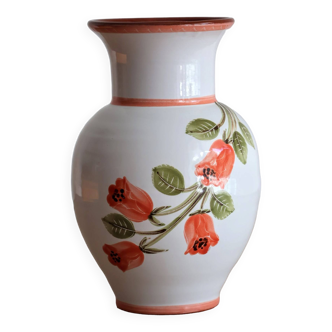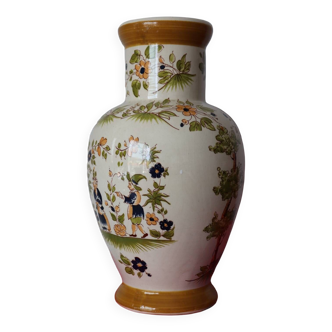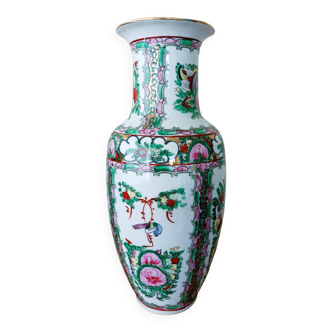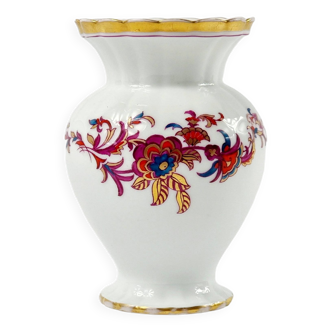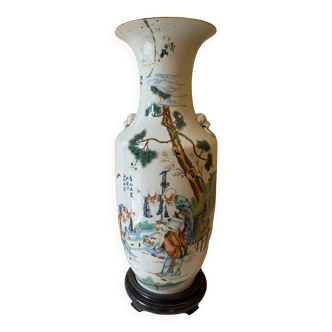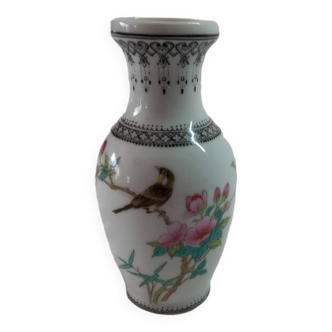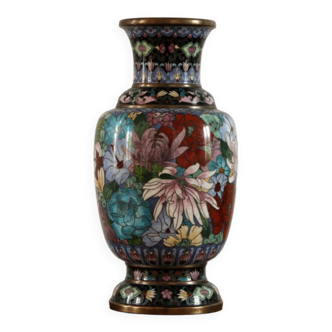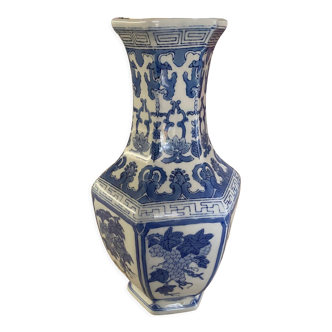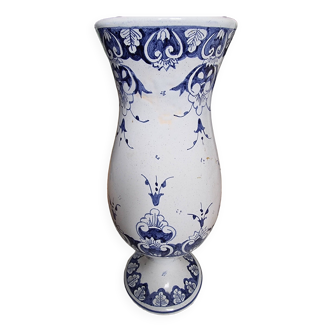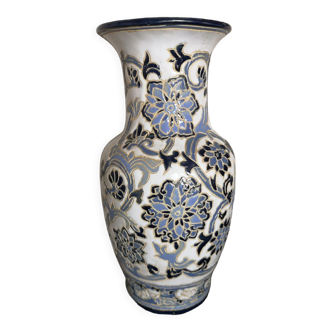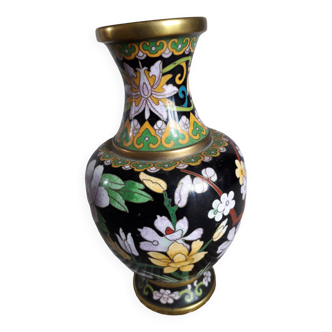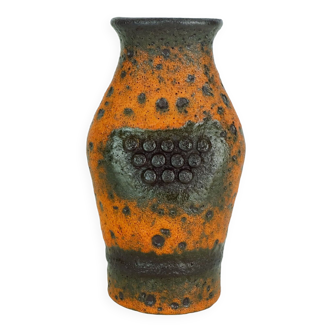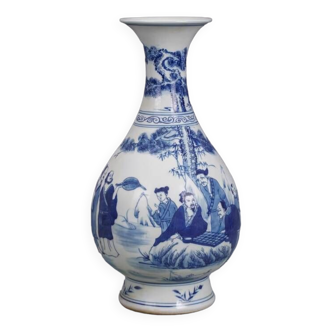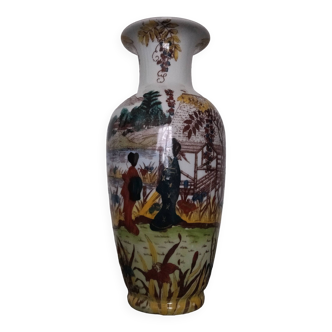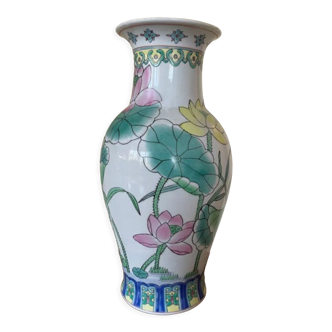Large Chinese porcelain vase decorated with geishas and flowers, mid-19th century
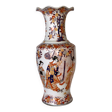
- Dimensions :
- H46 x W20 x D20
- Color :
- multicolour
- Material :
- ceramics, porcelain and earthenware
- Style :
- classic
1830-1870, Qing Emperor, Canton, mid-19th century. Export following the Paris World's Fair of 1867 * This sumptuous Chinese vase is inspired by the prints of the great masters of ukiyoe, Utamaro and Hokusaii. It is entirely hand-painted. It is a scene from the court during the Edo period, an oiran** and her servants. Paintings of human figures on porcelain are very difficult, those of creatures as elegant and mysterious as the oirans are perilous. Indeed, their faces very quickly become distorted by the clumsiness of the brush. On this vase, the elegance and beauty of the geishas have survived the difficulty. There are some compositional errors in the geishas' kimono. The thin over-belt is worn too low, as is the hairstyle of the "oiran", a court geisha who is too exuberant. To this must be added the little dog that has a cat pose, or more precisely a foo dog pose. On the other hand, the decorator of the vase has very well done the flowers that are luxuriant, omnipresent and sometimes gigantic. This vase represents China's fascination with Japan, and Japanese potters were also inspired by, and copied the Chinese masters. A beautiful and quite rare object. *The 1867 World's Fair in Paris marked Japan's first participation in a major public exhibition abroad, and this on the eve of the Meiji Restoration. This event thus inaugurated a whole series of events highlighting the art, crafts and culture of the Japanese archipelago, until then unknown to a large part of the French public. Thanks to Japonism, Chinese porcelain manufacturers began to copy Japan, and produced these pieces for export. **Oiran (花魁, "first flowers") were high-ranking courtesans in Japan.




















